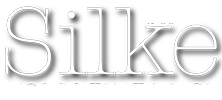Crafting a compelling case study
A classic formula for telling your story
Get your 3 acts together
So your website tells us you have a brilliant service or product, but how do you back that up? Evidence builds trust.
Testimonials will bolster your credibility. Social proof (in the form of positive comment on social media) is increasingly important, especially in the consumer sphere. But don’t forget case studies, particularly if you’re a B2B company.
Case studies can be a powerful way of winning over a skeptical reader. By turning your warm words into cold facts, a well-constructed case study can persuade them to take the next step towards becoming clients.
Why do case studies work?
Case studies turn broad, general statements into specific examples. Properly written, they show rather than just tell. If the person reading can picture that situation in their mind, it becomes more real. And if they can relate it to their own needs, then you’ve not only got their attention. You can create desire and spur them to act.
It’s like telling a good story. And that’s why many companies (especially when communicating B2B) use the classic three-act story structure that’s the archetype of story-telling through the ages. Literary experts trace it back to Aristotle. The three phases are:
- the set-up (describing the characters, a challenging incident or catalyst, leading to a dramatic question)
- the confrontation (when the protagonist takes action to resolve the problem)
- the resolution (the dramatic question is answered and the problem is solved).
How we adapt it
We adapt the structure and often recommend this stylised format*:
- Challenge (or problem/brief, if you prefer): Who the client was, their market, and the problem they faced.
- Action (or solution): What you did to solve those problems, showing (not just telling) the capabilities and expertise you used to do it.
- Outcome (or result): What was achieved, if possible with quantitative results and a pertinent quote from the client.
What about voice and confidentiality?
But what if a particular client is not happy for you to cite (and quote) them, or the nature of your business generally precludes it? There are ways around it. You can still draft a case study, but it’s even more important to ensure that the language makes your (anonymous) story credible.
Partly for this reason, some companies think that using the third person (they/it, etc) when talking about their own company, makes a case study sound more independent or impartial. But the first person (we, us, etc) can come across as more honest and direct.
What’s more important is that you focus on the typical problems clients face and concentrate on the special skills you apply to solve them.
A case in point
Challenge: My client, a business consultant, was struggling to showcase how he used his impressive skills set to drive several initiatives that improved the corporate culture of his former employer.
Solution: We broke down his over-long report, identified three key themes, and re-cast the material (and extracted additional information) to create three distinct and focused case studies.
Outcome: Each made a clear, compelling case for the capabilities that had helped transform quality of service, health and safety, and sustainable development in this national business.
Our client appreciated the value of this approach – more evidence, more clearly presented, generating more interest from prospects.
For other examples, and testimonial evidence, check out this page.
Drawing out the key lessons from a case study isn't always easy. Tell us about a project or customer, and we'll build a case for you.
* Note: We can also suggest other sub-titles – and formats – that are less formal. There may well be variations or radically different styles that are better suited to your business. Contact us if you'd like to explore the options ...


